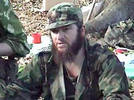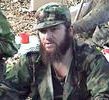
Chechnya: Again the Epicenter of Insurgent Violence in the North Caucasus?
Publication: Eurasia Daily Monitor Volume: 6 Issue: 204
By:

In recent months, federal operations in Ingushetia and Chechnya, as well as punitive security measures in Dagestan have gained momentum (ITAR-TASS, October 28). Official announcements indicate that these operations have hampered the ability of the insurgents in the North Caucasus to sustain large-scale attacks in the “year of the offensive” announced by rebel leader Dokka Umarov in May (www.kavkazcenter.com, May 17). Nonetheless, while local sweep operations have led to the deaths of a considerable number of so-called militants, daily attacks in Chechnya, as well as low-level violence in parts of Dagestan and Ingushetia indicate that inter-generational change along with repressive federal policies have created the conditions in which support for attacks against federal authorities has not diminished.
In a recent announcement by Chechen Interior Minister Ruslan Alkhanov, he noted that nearly one hundred and fifty members of illegal armed formations were killed in federal operations since April. Reportedly, the majority were killed in Chechnya (RIA Novosti, November 2). In a similar press statement in September, the Ingush President Yunus-Bek Yevkurov announced that scores of militants had been killed in a series of sweep operations (RIA Novosti, September 14). While human rights organizations have long expressed doubts over official data on alleged militant activity, far from illustrating that local counter-insurgency sweeps have been successful, the number of deaths attributed to counter-terrorist operations in Ingushetia and Chechnya indicates that the insurgency retains a measure of localized support. Moreover, the sophisticated clandestine support network now includes a hitherto limited capability to conduct attacks within Chechnya, bolstered by a younger generation of volunteers who have now joined the ranks of the insurgency over the last few months (www.kavkaz-uzel.ru, October 1).
In order to counter this trend, weekly reports announce the deaths of key figures in the insurgency by the federal authorities. The localized “special operations” have led to some sporadic successes including, most recently, the death of a jamaat leader from Khasavyurt in a shootout in the Dagestani capital, Makhachkala (ITAR-TASS, November 2). Nearly two months earlier, Ingush officials announced the death of Rustam Dzortov, in a shootout following a special operation by federal units (www.kavkaz-uzel.ru, September 5). Dzortov was reportedly involved in the assassination attempt on the Ingush President Yevkurov in June (RIA Novosti, September 5).
More recently, news reports indicated that Ruslan Alkhanov had personally overseen another “special operation” in the Oktyabrsky district of Grozny, when four would-be suicide bombers, including two women, were killed (www.kavkaz-uzel.ru, October 22), and that the Chechen President Ramzan Kadyrov himself had actually taken part in a special operation when an armed militant was surrounded in Grozny (www.kavkaz-uzel.ru, October 31). This resulted in the death of Ali Khasanov. According to the report, Khasanov was a close ally of Dokka Umarov and the right-hand man of Hussein Gakaev, leader of the Shali jamaat who, along with his brother, are allegedly responsible for the recent upsurge in suicide attacks in Chechnya.
Some months earlier, federal officials announced that a suicide attack on September 12 was conducted by a Chechen man in his early twenties, linked to Muslim Gakaev’s Vedeno jamaat (www.kavkaz-uzel.ru, September 15). This was followed on September 16, when a female bomber detonated explosives next to a police vehicle parked at a checkpoint on Putin Avenue in central Grozny (ITAR-TASS, September 16). The explosion wounded two police officers, one of whom later died (RIA Novosti, September 16). Quoting an unnamed source in the local administration, Kavkazsky Uzel reported that the attack was attributable to ideologue Said Buratasky, the Shali and Vedeno jamaats led by Muslim and Hussein Gakaev, as well as two Arab mercenaries named as Yasir and Makhdan (www.kavkaz-uzel.ru, September 17). Local authorities indicated that another man, Dragan Dinaev, who was killed near Vedeno on September 15, had, along with “Arab instructors,” also been involved in suicide attacks in Grozny (EDM, September 18). The instructors, Mokhanad or Makhdan, actually refer to the Arab military aide to Dokka Umarov, Muhannad, while references to Yasir refer to Abu Yasser al-Sudani, another long serving military aide and member of the foreign fighter movement involved in the hierarchy of the North Caucasus insurgency. These announcements, often combined with reports by local officials like Dagestan’s Interior Minister Ali Magomedov that more severe suicide attacks had been prevented (RIA Novosti, September 1), seek to divert attention from localized acts of revenge that fuel parts of the insurgency. The implication, much like that advanced by Kadyrov and Dagestani officials, is that the insurgency does not have roots in the local population.
Nevertheless, the insurgents maintain a capability to launch suicide attacks in Chechnya. In late September, rebel websites announced that a suicide attack directed against Kadyrov had failed, when a woman attempted to get through a security cordon in Gudermes. According to the statement, the woman detonated her explosives when stopped by officials (www.kavkazcenter.com, September 28). Then, another suicide attack was averted in Stary Atagi, when a young bomber named as Vakha Malsagov, was spotted acting suspiciously outside a local police station, detonated explosives, killing himself (www.kavkaz-uzel.ru, October 1). More recently, on October 21, another suicide attack occurred in Grozny, wounding four policemen (RIA Novosti, October 21). This was followed shortly afterwards by an official announcement that a second suicide attack directed against Kadyrov, this time in Grozny using a car-bomb, had also been prevented (RIA Novosti, October 23). On October 27, a suspected militant resisted arrest and blew himself up, killing one police officer and injuring another (RIA Novosti, October 27). Three days later, another suspected militant detonated explosives, after being surrounded by police in the Leninsky district of Grozny (RIA Novosti, October 30).
This indicates that insurgents across the North Caucasus retain a capability to mount a sustained campaign of violence, which has increased in intensity over the summer months, and remains an ongoing concern for the federal authorities. The upsurge in attacks has been marked by continued attempts to use suicide attacks in Chechnya proper, alongside a broader and somewhat sporadic campaign of attacks in Dagestan and Ingushetia. This may, in the long term, create problems for the federal authorities, as they attempt to counter the upsurge in attacks. Significantly, however, the attacks, rather than being attributable to foreign mercenaries and Arab instructors, indicate that disenfranchised younger groups are becoming increasingly active in the militant underground network, which now operates as a clandestine movement with an undiminished measure of localized support across the North Caucasus.a




